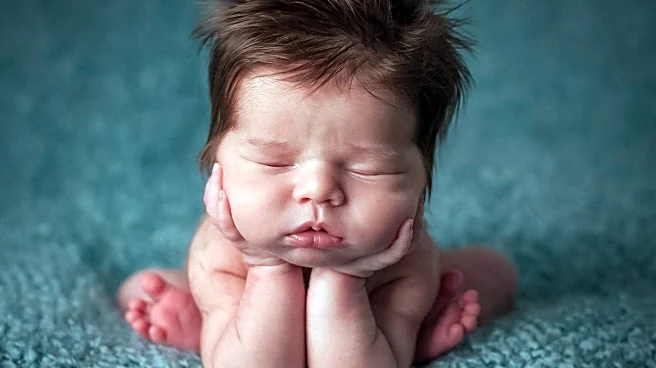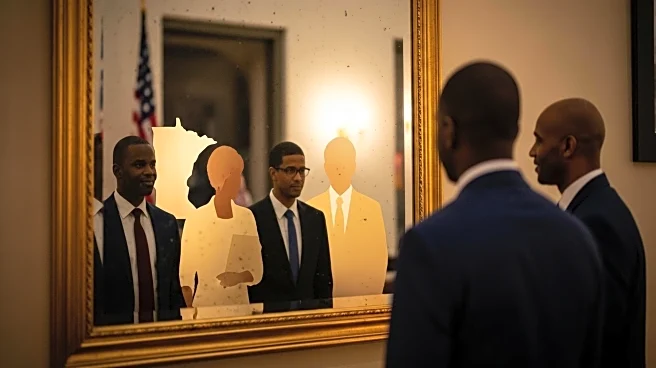What's Happening?
Abby and Brittany Hensel, known for their unique condition as conjoined twins, were recently seen at a McDonald's with a newborn baby. The twins were photographed in casual attire, carrying a baby carrier, and interacting with a friend before departing in their Tesla. This sighting adds to recent public appearances where the twins have been seen engaging in everyday activities in their Minnesota town, such as running errands and visiting a groomer with their labradoodle. Although Abby and Brittany have not publicly confirmed the newborn as their child, the recent events suggest they may have welcomed a new addition to their family.
Why It's Important?
The public interest in Abby and Brittany Hensel stems from their unique life as conjoined twins, which has been documented in various media over the years. Their recent appearances with a newborn could spark discussions on family dynamics and parenting in unique circumstances. This development may also influence public perceptions and understanding of conjoined twins, highlighting their ability to lead fulfilling lives. The twins' visibility can contribute to broader conversations about diversity and acceptance in society, potentially impacting social attitudes and policies related to individuals with unique physical conditions.
What's Next?
If Abby and Brittany Hensel choose to publicly confirm the newborn as their child, it could lead to increased media attention and public interest in their family life. This might result in further coverage or even a documentary exploring their experiences as parents. Additionally, their story could inspire discussions on medical and ethical considerations surrounding conjoined twins and parenting. As public figures, their choices may influence societal attitudes and potentially lead to advocacy or support initiatives for families with unique circumstances.
Beyond the Headlines
The Hensels' situation raises deeper questions about the societal and ethical dimensions of parenting as conjoined twins. It challenges traditional notions of family and parenting roles, potentially influencing cultural narratives about diversity and inclusion. Their story could also prompt discussions on medical advancements and support systems for individuals with unique physical conditions, highlighting the importance of accessible healthcare and social services. Long-term, their experiences may contribute to shifts in cultural perceptions and policies regarding individuals with disabilities.













